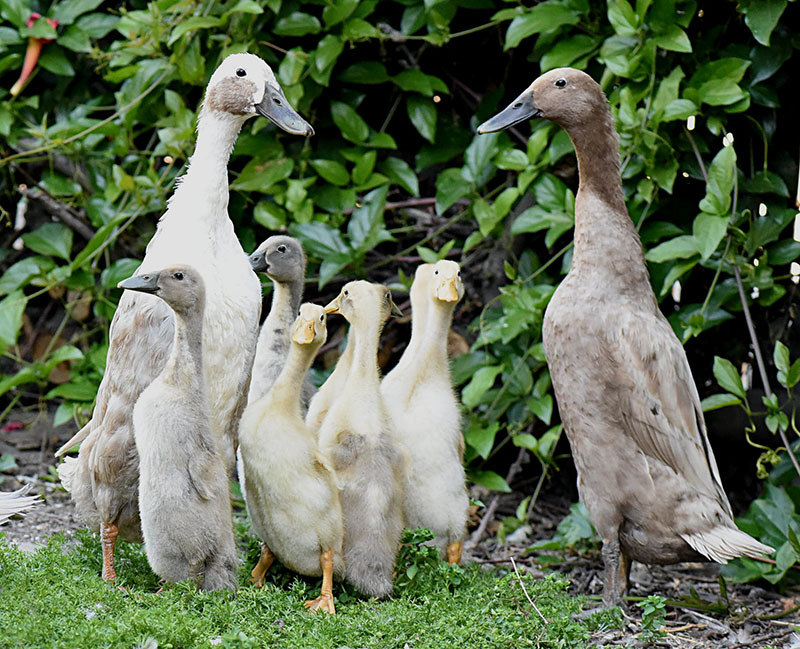Runner Ducks
The Runner ducks are the Leghorns of the duck family. They are prolific layers. Three hundred egg Indian Runner ducks were described and illustrated in the poultry press of 1912 to 14, and preceded the future for 300 egg hens which came later. In England, duck egg laying contests are carried on.
 There are three varieties of Indian Runners: the Fawn and White, the White, and the
Penciled. The breed has a distinctive type, the long, flat, straight head and long,
slender neck forming, in shape, and umbrella handle and stem; the back should be long,
straight and carried upright, and with the body should take on almost horizontal bearing.
The type should be clean cut, there being little indication of a keel. The entire
bearing should be upright and racey.
There are three varieties of Indian Runners: the Fawn and White, the White, and the
Penciled. The breed has a distinctive type, the long, flat, straight head and long,
slender neck forming, in shape, and umbrella handle and stem; the back should be long,
straight and carried upright, and with the body should take on almost horizontal bearing.
The type should be clean cut, there being little indication of a keel. The entire
bearing should be upright and racey.
As would be expected in an active, profile breed of this kind, the specimens should not have too much size. The desired weights are: Adult drake, 4.5 lbs; adult duck, 4 lbs; young drake, 4 lbs; young duck, 3.5 lbs. This breed originated in India, was introduced into England as early perhaps as 1830, but was little known in the United States prior to 1900. The Indian Runner produces a small to medium size carcass, but one of good quality. The ducks are practically non-sitters and are popular because of their prolific egg production which rivals the 200 egg strains of chickens.
References
All Breeds of Poultry, Origin: History: Description, Mating and Characteristics, by Frank L. Platt. Published by AMERICAN POULTRY JOURNAL, Chicago, Illinois.
